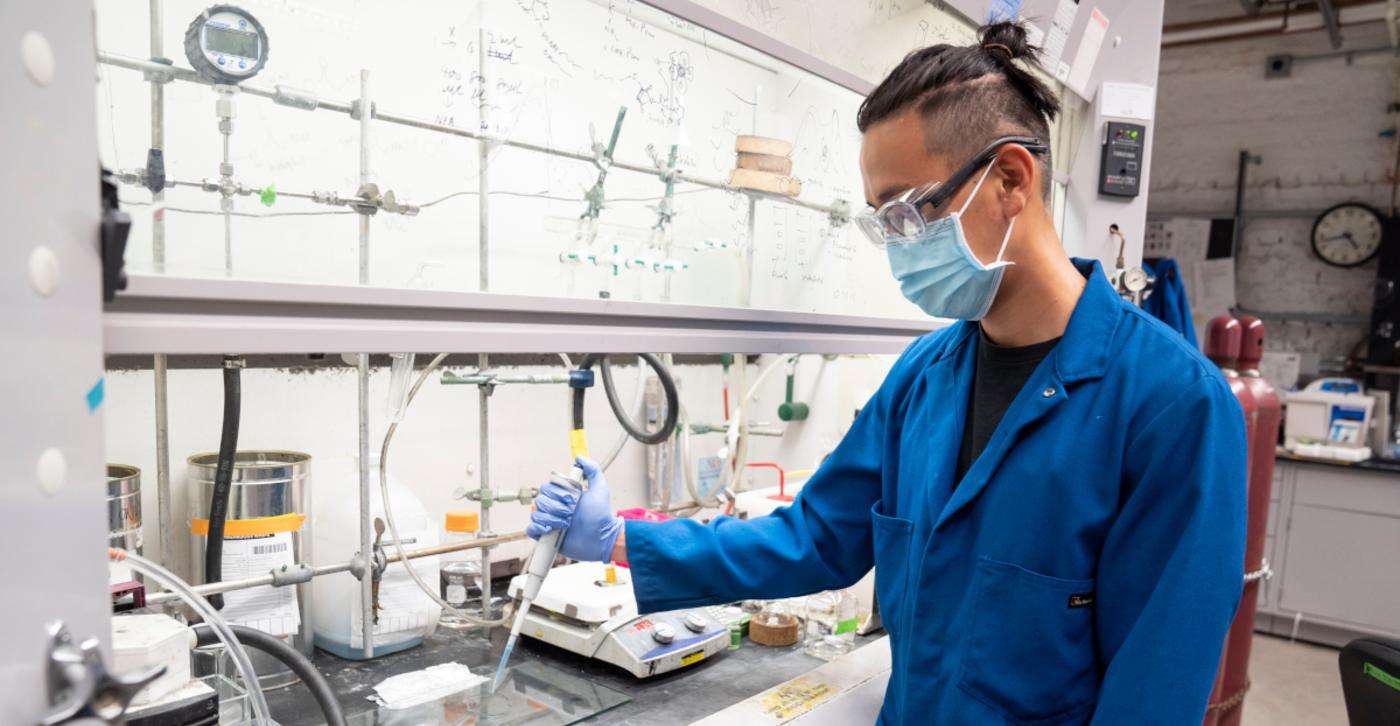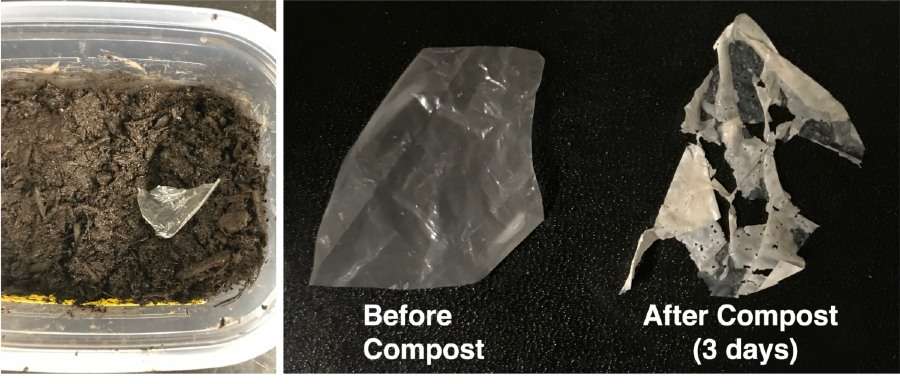NASA's Rover Makes Oxygen on Mars for the First Time
NASA's Perseverance Rover made oxygen from the thin air on Mars for the first time—a historic moment.

Despite our efforts to sort and recycle, less than 9% of plastic gets recycled in the U.S., and most ends up in landfill or the environment.
Biodegradable plastic bags and containers could help, but if they're not properly sorted, they can contaminate otherwise recyclable #1 and #2 plastics. What's worse, most biodegradable plastics take months to break down, and when they finally do, they form microplastics, tiny bits of plastic that can end up in oceans and animals' bodies, including our own.
Now, scientists at the the Berkeley Lab and UC Berkeley have designed an enzyme-activated compostable plastic that could diminish microplastics pollution, and holds great promise for plastics upcycling.
The material can be broken down to its building blocks—small individual molecules called monomers—and then reformed into a new compostable plastic product.
"In the wild, enzymes are what nature uses to break things down—and even when we die, enzymes cause our bodies to decompose naturally. So for this study, we asked ourselves, ‘How can enzymes biodegrade plastic so it's part of nature?" said senior author Ting Xu , who holds titles of faculty senior scientist in Berkeley Lab's Materials Sciences Division, and professor of chemistry and materials science and engineering at UC Berkeley.
At Berkeley Lab, Xu is leading an interdisciplinary team of scientists and engineers from universities and national labs around the country to tackle the mounting problem of plastic landfill posed by both single-use and so-called biodegradable plastics.
Most biodegradable plastics in use today are usually made of polylactic acid (PLA), a vegetable-based plastic material blended with cornstarch. There is also polycaprolactone (PCL), a biodegradable polyester that is widely used for biomedical applications such as tissue engineering.
But the problem with conventional biodegradable plastic is that they're indistinguishable from single-use plastics such as plastic film, so a good chunk of these materials ends up in landfills. And even if a biodegradable plastic container gets deposited at an organic waste facility, it can't break down as fast as the lunch salad it once contained, so it ends up contaminating organic waste, said co-author Corinne Scown at the Berkeley Lab's Energy Technologies Area.
Another problem with biodegradable plastics is that they aren't as strong as regular plastic. That's why you can't carry heavy items in a standard green compost bag. The tradeoff is that biodegradable plastics can break down over time, but still, Xu said, they only break down into microplastics, which are still plastic, just a lot smaller.
So Xu and her team decided to take a different approach—by "nanoconfining" enzymes into plastics.
Putting enzymes to work

In a series of experiments, reported in the journal Nature, Xu and co-authors embedded trace amounts of commercial enzymes Burkholderia cepacian lipase (BC-lipase) and proteinase K within the PLA and PCL plastic materials. The scientists also added an enzyme protectant called four-monomer random heteropolymer, or RHP, to help disperse the enzymes a few nanometers (billionths of a meter) apart.
In a stunning result, the scientists discovered that ordinary household tap water or standard soil composts converted the enzyme-embedded plastic material into its small-molecule building blocks called monomers, and eliminated microplastics in just a few days or weeks.
They also learned that BC-lipase is something of a finicky "eater." Before a lipase can convert a polymer chain into monomers, it must first catch the end of a polymer chain. By controlling when the lipase finds the chain end, it is possible to ensure the materials don't degrade until being triggered by hot water or compost soil, Xu explained.
In addition, they found that this strategy only works when BC-lipase is nanodispersed — in this case, just 0.02 percent by weight in the PCL block, rather than randomly tossed in and blended.
"Nanodispersion puts each enzyme molecule to work—nothing goes to waste," Xu said.
And that matters when factoring in costs. Industrial enzymes can cost around $10 per kilogram, but this new approach would only add a few cents to the production cost of a kilogram of resin because the amount of enzymes required is so low, and the material has a shelf life of more than 7 months, Scown added.
Looking to the future
Developing a very affordable and easily compostable plastic film could incentivize produce manufacturers to package fresh fruits and vegetables with compostable plastic instead of single-use plastic wrap. And as a result, save organic waste facilities the extra expense of investing in expensive plastic-depackaging machines when they want to accept food waste for anaerobic digestion or composting.
Since their approach could potentially work well with both hard, rigid plastics and soft, flexible plastics, Xu would like to broaden their study to polyolefins, a ubiquitous family of plastics commonly used to manufacture toys and electronic parts.
The team's truly compostable plastic could be on the shelves soon. They recently filed a patent application through UC Berkeley's patent office.
"When it comes to solving the plastics problem, it's our environmental responsibility to take up nature on its path. By prescribing a molecular map with enzymes behind the wheel, our study is a good start," Xu said.
That's exciting news indeed.
Source: DOE/Lawrence Berkeley National Laboratory
SHARE This Plastics Breakthrough With Pals on Social Media…
Be the first to comment